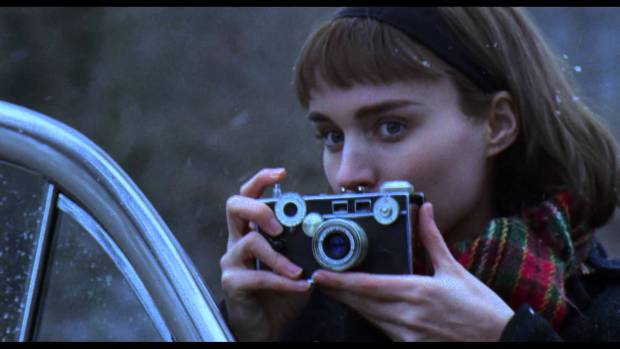NICK MASTRINI reviews ‘Carol’ at Picturehouse Central, where director Todd Haynes took part in a Q&A earlier this week.
At a crucial moment in Carol, a character utters: “we never look like that”. It is an apposite remark because Carol marks the discovery of beauty. It laments how society can hide that beauty and it acknowledges that, once hidden, beauty must be captured, made valuable because of its rarity.
Carol captures the beauty made elusive by early 1950s American society. A lesbian romance must remain clandestine, and what is left unsaid is as important as what is spoken. The visual becomes vital; director Todd Haynes states that Cate Blanchett ‘had to be portraying the image of Carol’, as the film ‘wouldn’t work if the acting made her feel too available to you’.
Carol’s lover, Rooney Mara’s Therese, is a street photographer in her spare time, her perspective oscillating between distance and intimacy. She spies Carol across the shop floor; shortly, they are locked in conversation. She photographs her from afar; soon, the two embrace.

Cinematographer Edward Lachman recreates early 50s New York with grain and smudged colour — inspired, Haynes notes, by the post-war photography of Saul Leiter. Rather than the late 50s aesthetic of Haynes’ Far From Heaven, set during what he calls the ‘glossy Eisenhower years’, Carol is visually influenced by how Leiter’s work evoked the ‘insecurity and vulnerability’ after war, with New York appearing to be ‘a very distressed place’.
Whereas Far From Heaven, Haynes says, used ‘the language of Hollywood filmmaking’, it was stills photography that inspired Carol. The former film portrays the façade of comfort evoked by late 50s films, but Carol depicts emotional realignment, in an attempt to take control of the present moment rather than being inhibited by the past.
Therese’s desire is the viewer’s, our point of view framed and obscured by the screen just as hers is by walls, pedestrians, and windows made misty by winter weather. Lachman and Leiter isolate figures in the blur of their surrounding environment, with warm colours contrasting with frozen melancholy. Therese speaks of her isolation as if she is the subject of a Leiter photograph: “I always spend New Year’s alone, in a crowd.”

As proximity shifts and intimacy becomes precious, every slight gesture — a touch of a shoulder, the smell of perfume, a backwards glance — becomes pivotal, an accumulation of delicate acts that form a powerful romance. Like ingénue Therese, the viewer’s understanding of these gestures grows with experience, as images recur and subtle moments are redefined. The opening scene is repeated from alternative angles near the film’s end, a beautiful portrayal of passion in conflict with doubt, seen initially through a lens of innocence before its true emotional underpinnings are revealed later on.
Uncertainty is crucial in Carol: words remain unspoken, and facial expression and body language are the sole communicators. At first, Carol seems to be in control, her iciness and calm masterly portrayed by Blanchett. As she tells Therese, “You seek resolutions and explanations because you’re young. I release you.”
Therese is being guided into a relationship made more intimate by its defiance of the male bravado that surrounds them. But Carol’s guidance isn’t an assurance of safety through this ‘release’; instead, she assures her that things change inexplicably, and escaping expectations is the most freeing act of all.

Many of these expectations are caused by the 1950s male gaze; a general ambivalence towards lesbian romance arising when what men desire is unattainable, in spite of social norms. Carol leaves such prejudice on the periphery. Haynes states that it is ‘not an issue film, but [its subject] is important’. The director depicts Carol and Therese ‘discovering their desire and being able to claim it’ — all that matters is their passion for each other.
As the film continues, Carol struggles to maintain control, in conflict with her husband over a divorce settlement. She knows she cannot continue “living against [her] own grain”, and Therese allows her to escape. Carol depicts how love at its most pure overrides the senses, indestructible to external forces. Haynes understands how we ‘wait for the love affair to be consummated’, tantalized with beauty until it can evade these external restrictions.
The acting in Carol is so intricate, navigated by Mara’s doe eyes and Blanchett’s regal demeanour, that when the love is consummated, it is a stunning crescendo. Rouge lipstick, perfectly curled hair, and rich fur coats contribute to the 50s aesthetic, constructing an alluring veneer. While Carol and Therese defy social restrictions, move beyond the windows that separate them from each other — and us from them — and finally remove the garments that adorn their beauty, we are continually entranced as they collide.
Carol is out now in cinemas nationwide.





